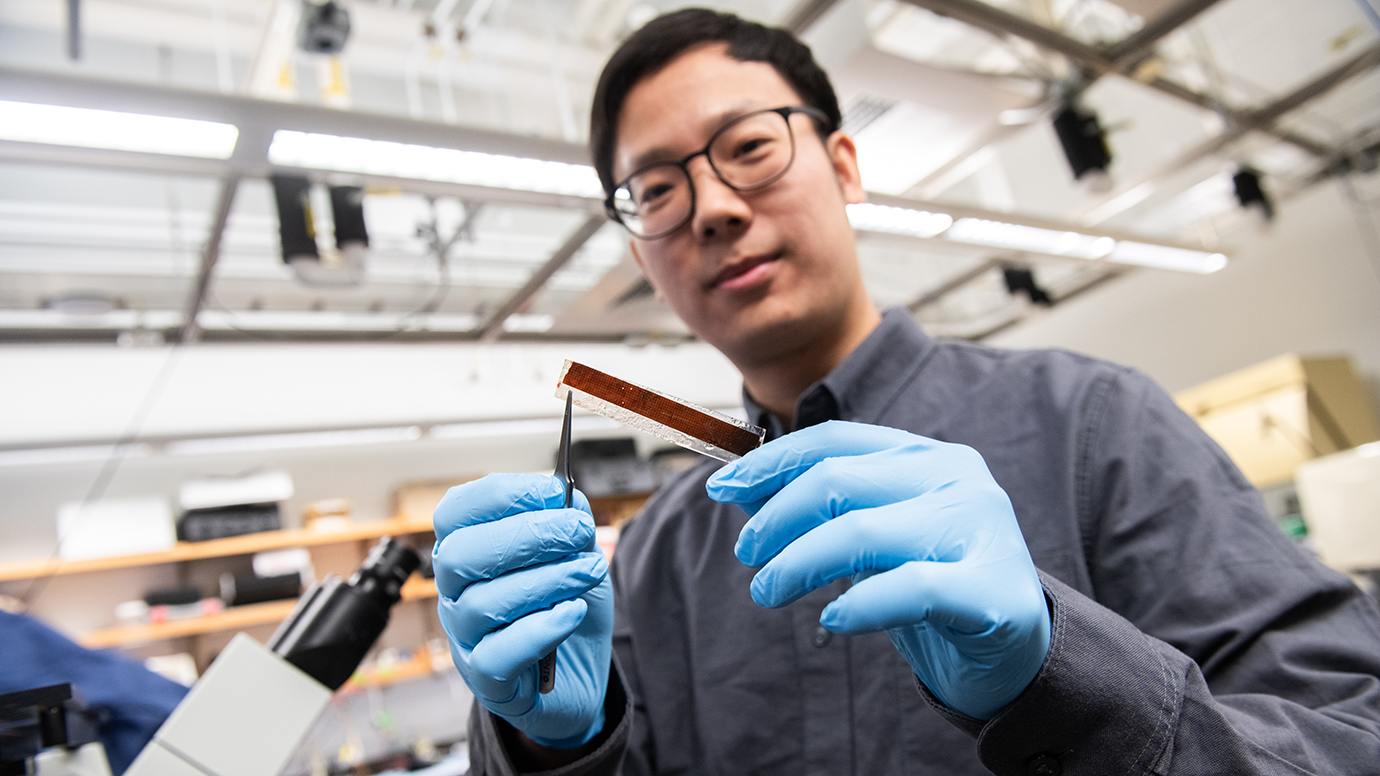Scientists invent ultra-thin, minimally-invasive pacemaker controlled by light
Researchers have developed a wireless device, powered by light, aimed at revolutionizing the field of pacemakers and neural modulation.

Researchers have developed a groundbreaking wireless device, powered by light, aimed at revolutionizing the field of pacemakers and neural modulation. (CREDIT: Jean Lachat)
Researchers at the University of Chicago have developed a groundbreaking wireless device, powered by light, aimed at revolutionizing the field of pacemakers and neural modulation. These devices, thinner than a human hair, promise to address complications associated with traditional pacemakers and offer new possibilities for medical intervention.
Published in Nature, the research showcases a promising avenue for reducing complications in heart surgery and expanding the applications of bioelectronics.
Lead researcher Pengju Li, a graduate student at the University of Chicago Pritzker School of Molecular Engineering, expressed optimism about the technology's potential, stating, "The early experiments have been very successful, and we're really hopeful about the future for this translational technology."
From left: Collaborators Pengju Li, Bozhi Tian, and Narutoshi Hibino review results in Tian’s lab at the Gordon Center for Integrative Sciences. (CREDIT: Jean Lachat)
Under the guidance of Prof. Bozhi Tian, the research team has been exploring the use of photovoltaics—technology similar to solar cells—to stimulate biological activity in the body. Unlike traditional pacemakers with wires and batteries, these devices utilize light to power and regulate cardiovascular or neural functions.
Li explained that while solar cells are designed to collect sunlight uniformly, their adaptation for biological purposes required a different approach. The team developed a system capable of delivering localized light stimulation, essential for precise control in therapies such as cardiac resynchronization therapy.
The device's design involves two layers of a silicon material known as P-type, which respond to light by generating electrical charge. The top layer, characterized by nanoporosity, enhances electrical performance and confines electricity to specific areas.
Related Stories:
This results in a flexible membrane, just one micrometer thin and significantly lighter than conventional pacemakers, making it more comfortable for patients.
Moreover, the device is designed for temporary use, eliminating the need for invasive removal procedures. Over time, it dissolves into a harmless compound, offering a convenient and safe solution for patients.
Narutoshi Hibino, professor of surgery at the University of Chicago Medicine and co-corresponding author of the study, hailed the advancement as a game-changer in cardiac therapy. He remarked, "We're at the cusp of a new frontier where bioelectronics can seamlessly integrate with the body's natural functions."
University of Chicago materials researcher Pengju Li with a prototype device that can deliver a thin pacemaker membrane via minimally invasive surgery. (CREDIT: Jean Lachat)
While initial trials focused on heart tissue, the researchers anticipate broader applications, including neuromodulation for conditions such as Parkinson's disease and chronic pain. Li introduced the term "photoelectroceuticals" to describe this emerging field.
Reflecting on the successful trials with pig hearts, Tian recalled the significance of the moment, stating, "I remember that day because it worked in the very first trial. It's both a miraculous achievement and a reward for our extensive efforts."
Design concepts for monolithic photoelectrochemical devices with high-spatiotemporal-resolution photo response. (CREDIT: Nature)
Additionally, Li's screening method for assessing the photoelectrochemical output of silicon-based materials holds promise for diverse applications beyond medicine, such as battery technologies and photovoltaic cells.
Moving forward, the research team is collaborating with the UChicago Polsky Center for Entrepreneurship and Innovation to commercialize the device, bringing this transformative technology closer to real-world applications.
For more science and technology stories check out our New Innovations section at The Brighter Side of News.
Note: Materials provided above by University of Arizona. Content may be edited for style and length.
Like these kind of feel good stories? Get the Brighter Side of News' newsletter.
Joshua Shavit
Science & Technology Writer | AI and Robotics Reporter
Joshua Shavit is a Los Angeles-based science and technology writer with a passion for exploring the breakthroughs shaping the future. As a contributor to The Brighter Side of News, he focuses on positive and transformative advancements in AI, technology, physics, engineering, robotics and space science. Joshua is currently working towards a Bachelor of Science in Business Administration at the University of California, Berkeley. He combines his academic background with a talent for storytelling, making complex scientific discoveries engaging and accessible. His work highlights the innovators behind the ideas, bringing readers closer to the people driving progress.



